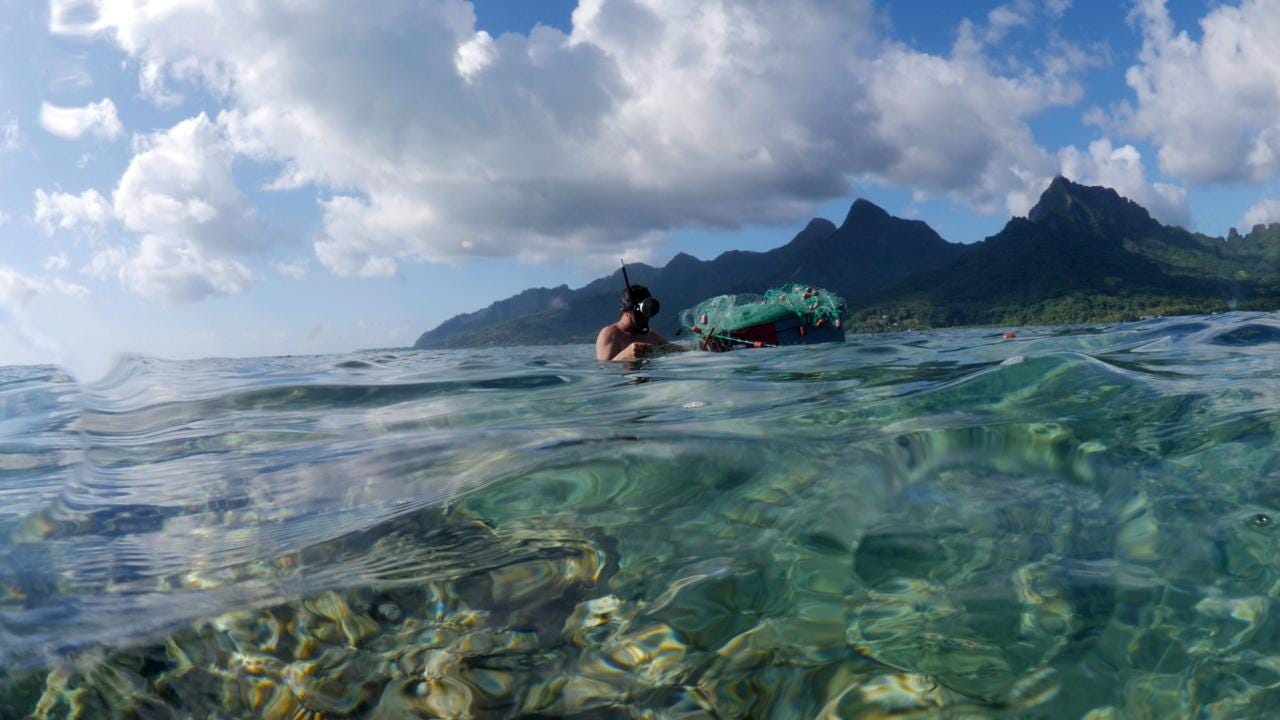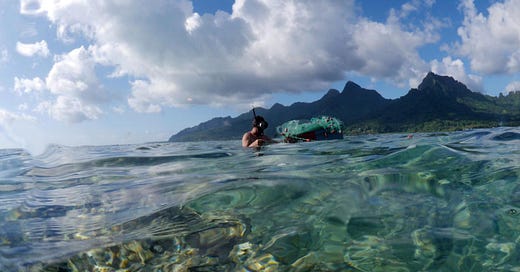The Al Gore of Polynesia
On a tiny South Pacific isle, a small-town mayor uses ancient fishing techniques to provide sustainability for his family—and a detailed PowerPoint to ensure his traditions never die.

Video edit by Justin Smith
Everyone on the island of Moorea turned out for the festival. There were French government officials in slacks, American scientists in safari shorts and flip-flops, and an array of locals dressed in their finest Hawaiian prints. The women wore fragrant flowers in their hair and some of the men went shirtless, sporting tribal tattoos and palm skirts. A trio of musicians sang in Tahitian, the tune’s sweet notes mournful despite the rhythm of drums and the plucky ukuleles. Palms swayed overhead, and through them were glimpses of the jagged green fingers of island peaks and the sapphire of Cook’s Bay across the road. And there was food: huge pans of baked plantains and breadfruit, pit-roasted pork belly that melted like butter on the tongue and po’e, a pudding of fruit and bread wrapped in banana leaves and baked in a pit fire.
Keep reading with a 7-day free trial
Subscribe to Narratively to keep reading this post and get 7 days of free access to the full post archives.



